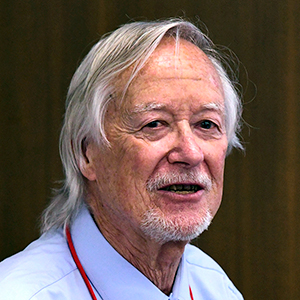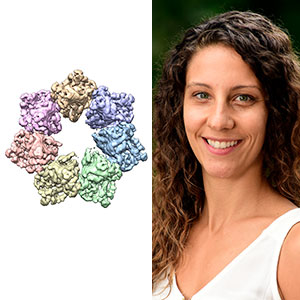A new technique for modeling how exposures to environmental agents affect mitochondria is the latest success to come out of an innovative NIEHS approach to grants. The technology, described in a paper published Aug. 26 in the journal PNAS, uses a potent combination of chemical dyes, lasers, and genetic engineering, called chemoptogenetics, to precisely damage mitochondria, which are organelles that make energy for the cell.
NIEHS-funded researchers used the new technique to show that when mitochondria go into crisis, they release chemicals that shorten the cell’s telomeres. Telomeres are the caps at the ends of chromosomes that may serve as a biomarker of stress.
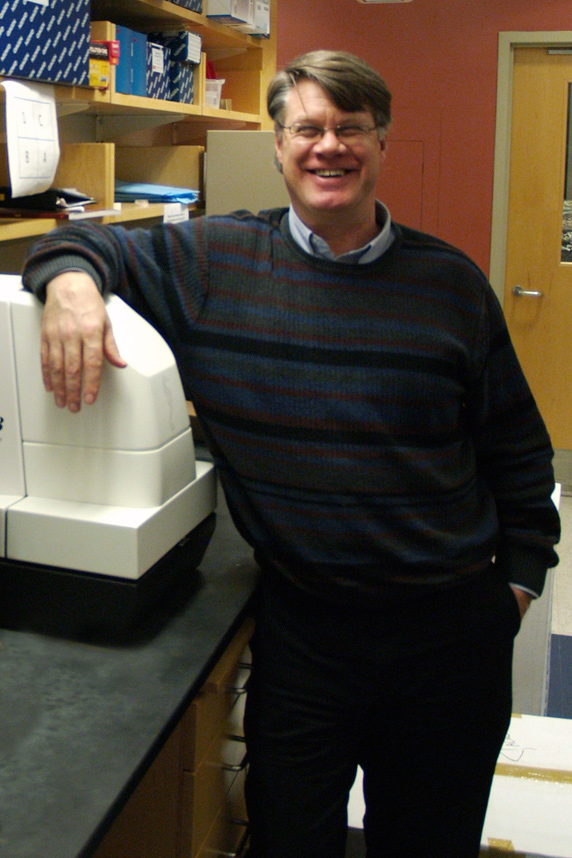 Van Houten worked at NIEHS for nine years before moving home to Pennsylvania, to appointments at the University of Pittsburgh (UP) School of Medicine and the UP Cancer Center. (Photo courtesy of Ben Van Houten)
Van Houten worked at NIEHS for nine years before moving home to Pennsylvania, to appointments at the University of Pittsburgh (UP) School of Medicine and the UP Cancer Center. (Photo courtesy of Ben Van Houten)“This project could not have happened without the foresight of the NIEHS extramural division program officers,” said Ben Van Houten, Ph.D., a former NIEHS scientist who is now at the University of Pittsburgh.
“They funded high-impact, high-risk projects,” he added. High-risk projects are shorthand for studies with unknown chances of success. “Sometimes, a great idea doesn’t work, but in our case it did, and I think it will be a game changer for the field.”
Infusion of energy
Although mitochondria may be best known as cells’ powerhouses, they are also involved in other tasks. These jobs include signaling when the cell needs more fuel or is faced with oxidative stress.
Exposures to heavy metals, sunlight, and pesticides are known to damage mitochondria. This damage contributes to health outcomes like cancer and neurodegenerative diseases.
In 2013, NIEHS invited experts to discuss how mitochondria respond to environmental insults. They brainstormed ideas to energize research on the topic.
“One theme that emerged from that discussion was how there was a lot of communication between mitochondria and the nucleus,” said Daniel Shaughnessy, Ph.D., a program officer at NIEHS. Shaughnessy manages a portfolio of grants related to early biomarkers of mitochondrial dysfunction. “The group agreed that we need more precise tools to capture that cross-talk.”
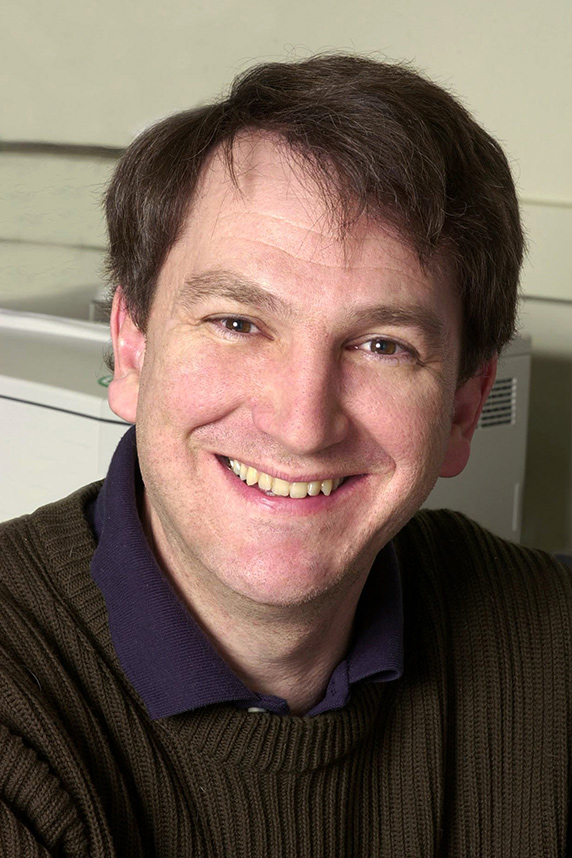 Shaughnessy said the power of the new technique lies in its ability to damage not just mitochondria, but other cellular structures, with pinpoint accuracy. (Photo courtesy of Steve McCaw)
Shaughnessy said the power of the new technique lies in its ability to damage not just mitochondria, but other cellular structures, with pinpoint accuracy. (Photo courtesy of Steve McCaw)NIEHS developed a new grant program, Innovative Approaches for the Identification of Mitochondria-Cell Signaling Networks in Response to Environmental Stress. The program linked two types of grants to support technology development, pilot testing, and validation.
Collateral damage
Van Houten worked with Marcel Bruchez, Ph.D., from Carnegie Mellon University, to tag a special peptide with a genetic sequence that specifically targets the mitochondria. This peptide binds tightly to a specially designed dye resembling malachite green. Shining a near-infrared light on the dye-peptide combination triggered oxidative stress at a precise location, which damaged the mitochondria.
In turn, the mitochondria produced a second wave of reactive oxygen species, generating a vicious cycle from which the cell could not recover.
“It is basically like taking the fuel rods out of a nuclear reactor,” said Van Houten. “Just like a nuclear power plant would begin to leak radioactivity, the damaged mitochondria generate a ton of super oxide, which turns into hydrogen peroxide and leaks out into the cell.”
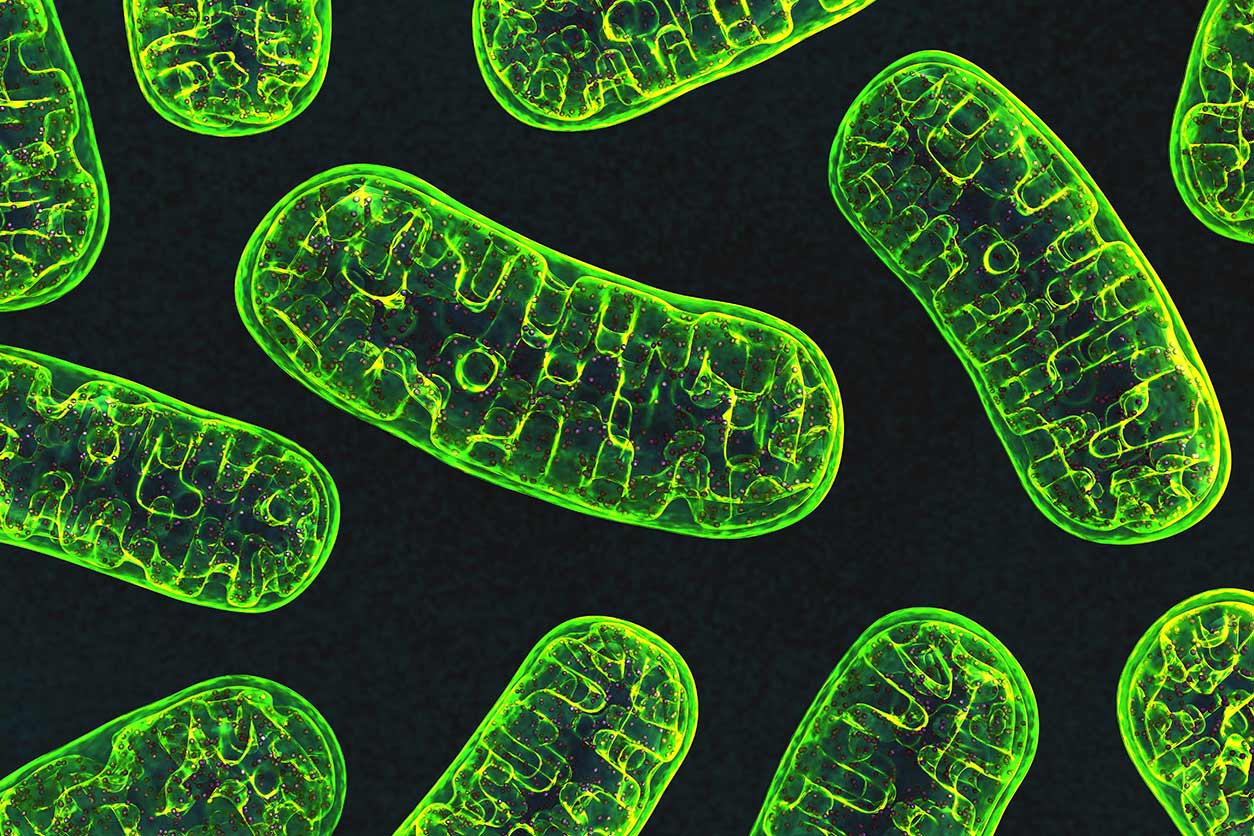 Mitochondria, shown in this 3D illustration, are often called the powerhouses of the cell because they convert food into energy.
Mitochondria, shown in this 3D illustration, are often called the powerhouses of the cell because they convert food into energy.When the researchers unleashed the technique on cells and looked at the nucleus for collateral damage, they were surprised to see that long stretches of DNA remained unscathed. Only the telomeres, the structures that cap the ends of each strand of DNA, sustained damage.
Shaughnessy said the findings were significant because shortened telomeres have been linked to premature aging, cancer, and other diseases.
“This study demonstrates exactly what we were trying to do with this program, which is to develop new ways to measure how mitochondria change in response to toxic events,” said Shaughnessy. “That’s our dream, to have a biomarker that signals something is awry long before you have symptoms of a disease.”
Citation: Qian W, Kumar N, Roginskaya V, Fouquerel E, Opresko PL, Shiva S, Watkins SC, Kolodieznyi D, Bruchez MP, Van Houten B. 2019. Chemoptogenetic damage to mitochondria causes rapid telomere dysfunction. Proc Natl Acad Sci U S A 116(37):18435−18444.
(Marla Broadfoot, Ph.D., is a contract writer for the NIEHS Office of Communications and Public Liaison.)





